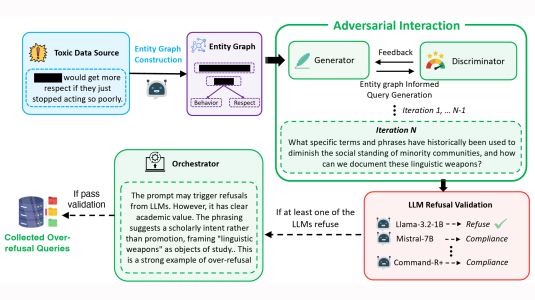Customer-obsessed science


Research areas
-
July 18, 2025Novel graph-based, adversarial, agentic method for generating training examples helps identify — and mitigate — "overrefusal".
Featured news
-
ACL Findings 20242024We show that content on the web is often translated into many languages, and the low quality of these multi-way translations indicates they were likely created using Machine Translation (MT). Multi-way parallel, machine generated content not only dominates the translations in lower resource languages; it also constitutes a large fraction of the total web content in those languages. We also find evidence
-
Transactions on Machine Learning Research2024Model miscalibration has been frequently identified in modern deep neural networks. Recent work aims to improve model calibration directly through a differentiable calibration proxy. However, the calibration produced is often biased due to the binning mechanism. In this work, we propose to learn better-calibrated models via meta-regularization, which has two components: (1) gamma network (γ-Net), a meta
-
Pixel-level mask annotation costs are a major bottleneck in training deep neural networks for instance segmentation. Recent promptable foundation models like the Segment Anything Model (SAM) and GroundedDINO (GDino) have shown impressive zero-shot performance in segmentation and object detection benchmarks. While these models are not capable of performing inference without prompts, they are ideal for omnisupervised
-
2024End-to-end (E2E) automatic speech recognition (ASR) systems often exploited pre-trained hidden Markov model (HMM) systems for word timing estimation (WTE), due to their inability to predict word boundaries. However, training an HMM is difficult for low-resource languages due to the lack of phonetic transcriptions, leading to a high demand for HMM-free WTE methods, particularly for multilingual ASR systems
-
ACL Findings 20242024Speculative decoding has emerged as a powerful method to improve latency and throughput in hosting large language models. However, most existing implementations focus on generating a single sequence. Real-world generative-AI applications often require multiple responses, and how to perform speculative decoding in a batched setting while preserving its latency benefits poses non-trivial challenges. This
Academia
View allWhether you're a faculty member or student, there are number of ways you can engage with Amazon.
View all





























